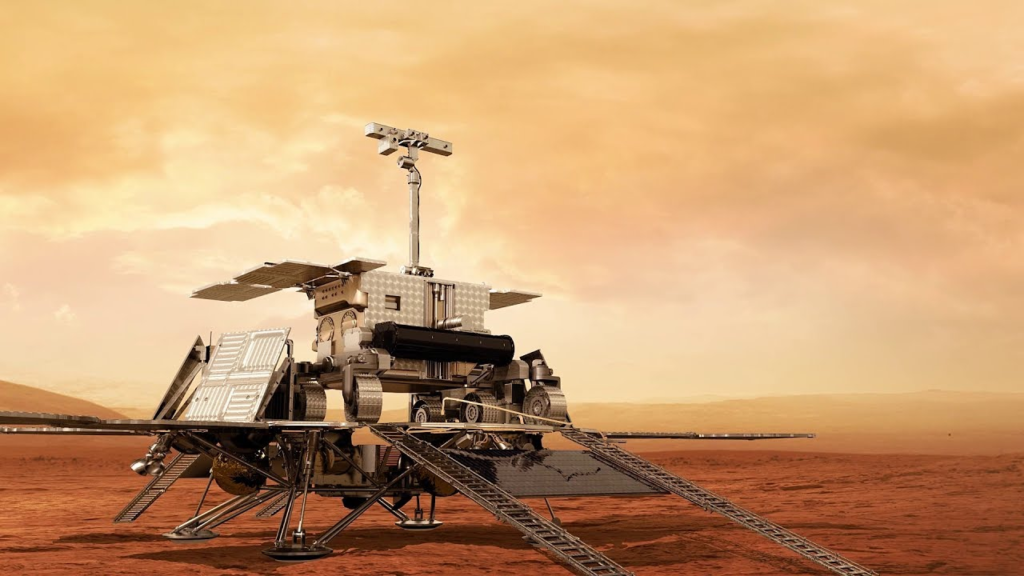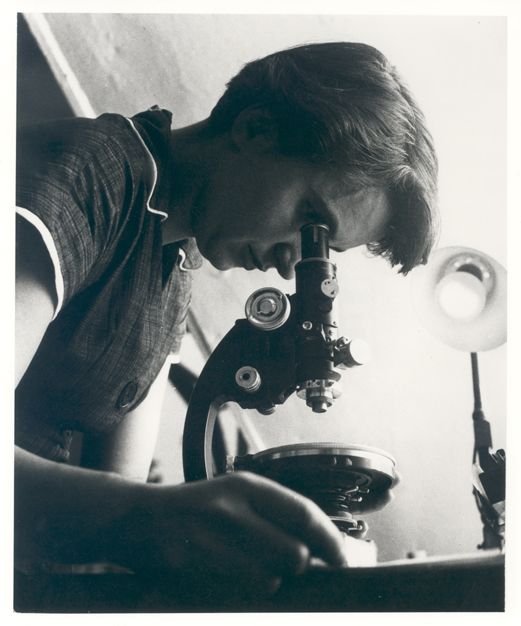RocketSTEM –28 March 2019
FL – The major components of the ExoMars 2020 mission to the Red Planet have at
last been named – the European-led rover is named ‘Rosalind
Franklin’ after a distinguished scientist involved in determining the structure
of DNA and the Russian-led surface science landing platform is named ‘Kazachok’ after a folk dance.
between the European Space Agency (ESA) and the Russian Space agency, Roscosmos.
The joint endeavor will launch in July 2020
on a Russian Proton rocket from
the Baikonur Cosmodrome in Kazakhstan and land on Mars in April 2021.
The
landing platform will transport the solar powered rover to the Red Planet’s surface and both
will be outfitted with science instruments to study the fourth planet from the
sun and search for signs of life, past or present.
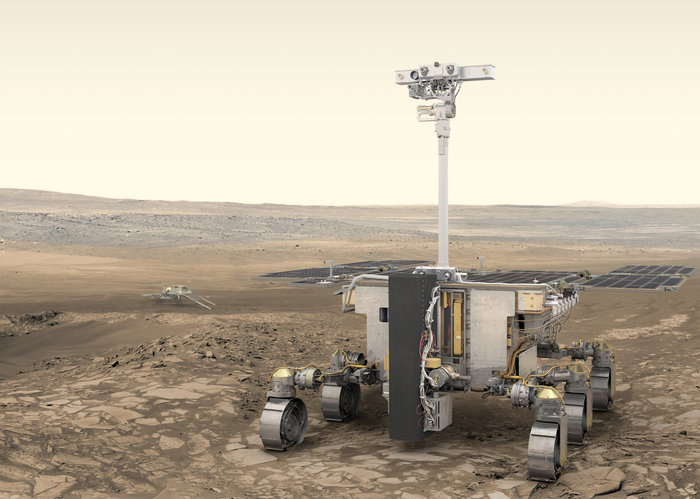 |
|
ESA ExoMars rover is named after distinguished scientist Rosalind
Franklin and will launch in July 2020 on a Russian Proton rocket to land on Mars in April 2021. Credit: ESA |
atop the ‘Kazachok’ surface landing platform, the ‘Rosalind Franklin’ rover
will drive off the Kazachok platform to perform scientific investigations “in
search of evidence of past – and perhaps even present – life buried underground,”
says ESA.
Meanwhile “Kazachok will remain stationary to
investigate the climate, atmosphere, radiation and possible presence of
subsurface water in the landing site.” The name literally means little
Cossack, and is a lively folk dance.
ExoMars
2020 will launch the same years as NASA’s 2020 rover which is as yet unnamed. Both
will be looking for signs of Martian life.
The
name ‘Rosalind Franklin’ was chosen by a panel of experts from over 36 000
entries submitted by citizens from all ESA Member States, following a competition launched by the UK
Space Agency in July last year.
|
|
“Rosalind
Elsie Franklin was a British chemist and X-ray crystallographer who contributed
to unravelling the double helix structure of our DNA. She also made enduring
contributions to the study of coal, carbon and graphite,” said ESA.
The ExoMars rover will be the first of its
kind to combine the capability to roam around Mars and to study it at a
significant depth.
Rosalind Franklin has been designed to drill
down to two meters into the surface to sample the soil, analyse its composition
and search for evidence of life past or present looking for life deep
underground.
“This name reminds us that it is in the human
genes to explore. Science is in our DNA, and in everything we do at ESA.
Rosalind the rover captures this spirit and carries us all to the forefront of
space exploration,” says ESA Director General Jan Woerner, in a statement.
The name was revealed in the ‘Mars Yard’ of
the prime contractor Airbus Defence and Space in Stevenage, in the United
Kingdom, where the rover is being built.
“This rover will scout the martian surface
equipped with next-generation instruments – a fully-fledged automated
laboratory on Mars,” says ESA astronaut Tim Peake who met the winners of the
naming competition.
“With it, we are building on our European
heritage in robotic exploration, and at the same time devising new
technologies.”
 |
|
ExoMars 2020 landing platform packed for shipment. Credit:
Roscosmos |
The landing platform and descent module was
built by Russian Lavochkin Association and recently shipped from Russia on an Antonov plane to the
Italian division of Thales Alenia Space who will perform final assembly and
testing of the mission and integration with the rover – in a combined European-Russian effort.
“We have
now a very challenging schedule of deliveries and tests both in Italy and
France. The coordination between the Russian and European teams is key to
timely reach the Baikonur Cosmodrome in 2020,” says François Spoto, ESA’s
ExoMars team leader.
The integrated ExoMars spacecraft assembly
will then be shipped to Baikonur for integration with the Proton rocket launcher.
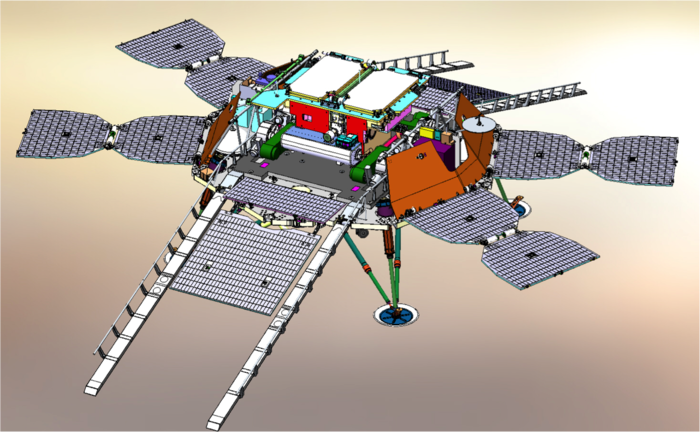 |
| ExoMars 2020 landing platform artists concept. Credit: Roscosmos |
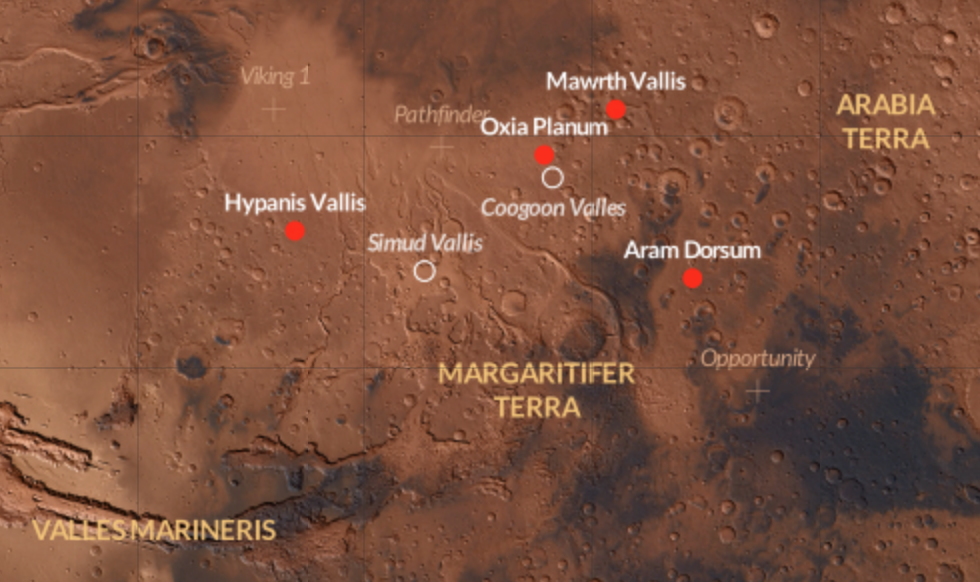 |
|
ExoMars 2020 landing site candidates. Credit: ESA
|
The 828 kg lander (1825 lb.) includes a science
payload of 45 kg with instruments and cameras provided from
Roscosmos and ESA.
The 310 kg
(680 lb) rover includes a 26 kg (57 lb) science payload
with a suite of research instruments, a 2
meter deep driller and cameras provided by Roscosmos and ESA as well as NASA’s
most advanced soil sample analyzer designed to search for organic molecules and
signs of life – even more powerful than the SAM instrument on NASA’s Curiosity Mars
rover.
‘Rosalind Franklin’ is designed to operate for at least seven months and
drive at least 4 km (2.5 mi) after landing.
Data and signals will be
relayed back to Earth via ESA’s ExoMars Trace Gas Orbiter which arrived in 2016
and searching for trace amounts of methane, which could be a hint of ongoing biological
or geological processes released into the Martian atmosphere.
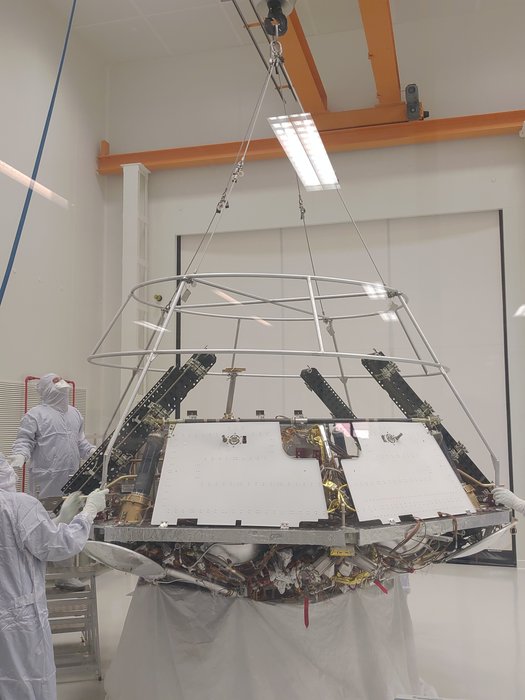 |
|
Exomars lander platform. Unpacking the
platform that is destined to land on the Red Planet as part of the next ExoMars mission in Turin, Italy. Credit: Thales Alenia Space |
Watch for Ken’s
continuing onsite coverage of NASA, SpaceX, ULA, Boeing, Lockheed Martin,
Northrop Grumman and more space and mission reports direct from the Kennedy
Space Center, Cape Canaveral Air Force Station, Florida and Wallops Flight
Facility, Virginia.
Stay tuned here for Ken’s continuing Earth and
Planetary science and human spaceflight news: www.kenkremer.com –www.spaceupclose.com – twitter @ken_kremer
– email: ken at kenkremer.com
Dr. Kremer is a research scientist and journalist based in the
KSC area, active in outreach and interviewed regularly on TV and radio about
space topics.
Ken’s photos are for sale and he is available for lectures and outreach events
Ken’s
upcoming talks:
Apr 3:
“Exploring Mars; The Search for Life & A Journey in 3-D.” 7 PM, Lawton C
Johnson Middle School, Summit, NJ:
https://www.eventbrite.com/e/sef-grant-presents-exploring-mars-and-the-search-for-life-3d-registration-55524445110


